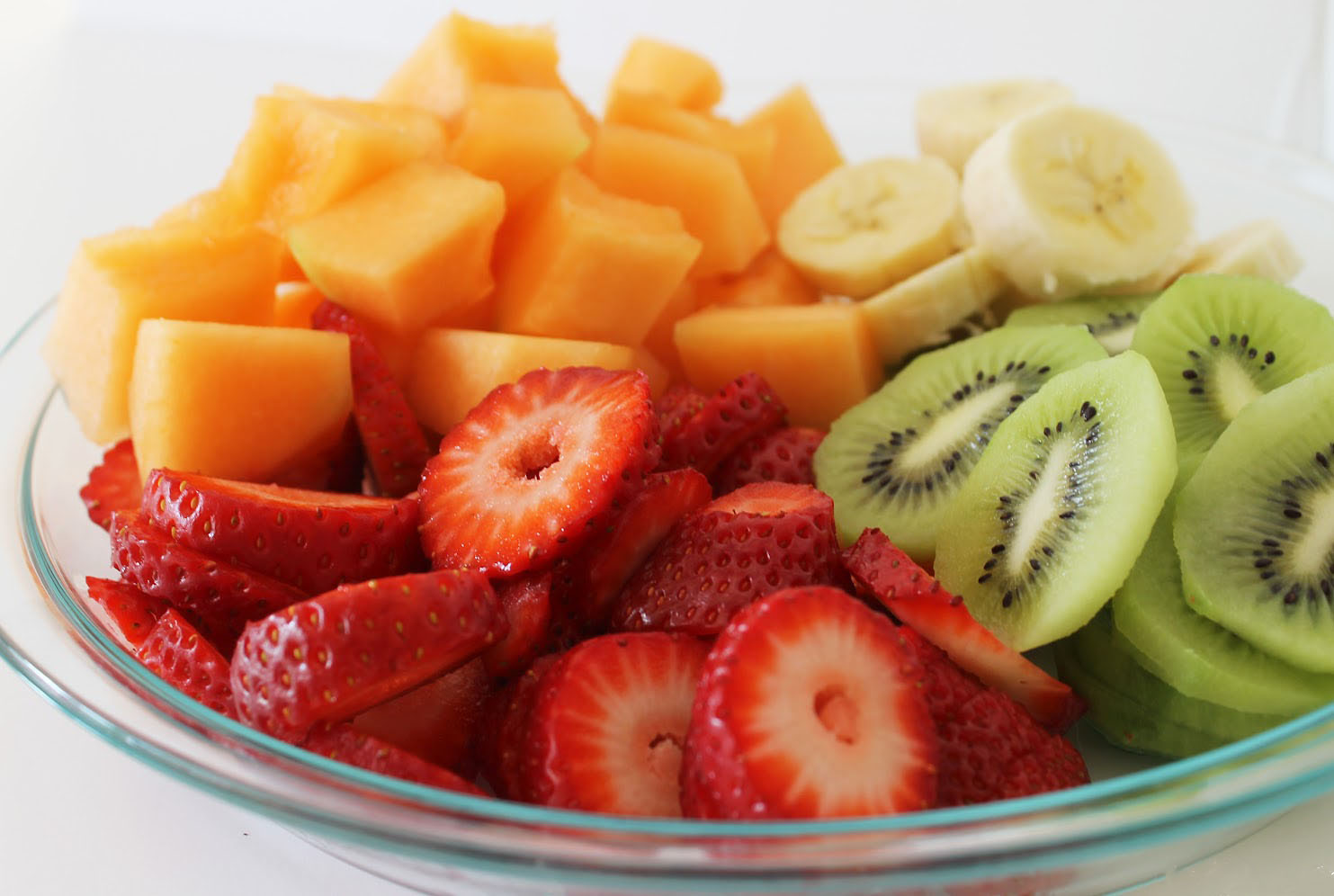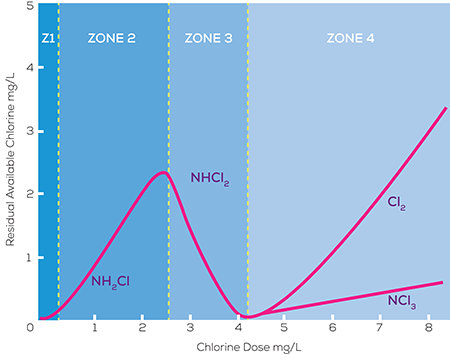In some applications such as the manufacturing of fresh-cut produce, many regulations stipulate that free chlorine must be applied to the water at a concentration greater than 50 mg/L. Such levels are known as super chlorination.

Superchlorination describes the process of adding chlorine in large quantities to overcome nitrogenous materials in water and achieve ‘breakpoint’.
In order to understand ‘breakpoint’, we need to be able to differentiate between free and combined chlorine.
Free chlorine usually exists in water as hypochlorous acid (HOCl) or the hypochlorite ion (-OCl), with the proportion of each dependent upon the pH of the sample.
When nitrogenous material such as ammonia is present in solution, chloramines will form.
There are three types of chloramines; monochloramine (NH2Cl), dichloramine (NHCl2) and trichloramine [also called nitrogen trichloride] (NCl3).
The amount of free chlorine in a sample, plus the amount of chloramines, is equal to the total chlorine:
Free Chlorine + Combined Chlorine (or ‘Chloramines’) = Total Chlorine
Distinguishing between free and combined chlorine below the breakpoint is of vital importance in ensuring adequate disinfection.
Chloramines are weaker disinfectants than free chlorine so often a longer contact time or higher doses are required when used as a disinfectant.
If a process uses free chlorine to disinfect a source of water containing ammonia, organic nitrogenous material or chloramines, then an understanding of chlorine chemistry and some knowledge of the water matrix is required.
Chlorine is added to the water sample and dissolves to form hypochlorous acid and the hypochlorite ion:
Cl2 + H2O -> HOCl + -OCl

ZONE 1
On addition of the chlorine, the water will consume some of this chlorine. The amount it consumes is known as 'the chlorine demand' of the water.
ZONE 2
After this initial period of consumption of chlorine by ammonia, the chlorine reacts with the free ammonia and forms monochloramines and a small amount of organic chlorine compounds:
HOCl + NH3 ↔ NH2Cl + H2O
ZONE 3
Once all the ammonia in solution has been consumed to form chloramines, dichloramines and nitrogen trichloride begin to form. The amount of monochloramine and organic chlorine compounds are reduced:
HOCl + NH2Cl ↔ NHCl2 + H2O
HOCl + NHCl2↔ NCl3 + H2O
ZONE 4
As more and more chlorine is added, the free chlorine begins to oxidise the chloramines.
The point at which all the dichloramine/nitrogen trichloride is oxidised into nitrogen is the ‘breakpoint’ and is the point most superchlorination techniques are seeking to achieve, as from this point, any additional chlorine added exists as free chlorine and therefore has high germicidal properties.
In general, the ratio of the chlorine: nitrogen ratio required to achieve breakpoint is 7.6: and in some applications may be higher if there are high concentrations of organic nitrogen. This may be the case in fresh produce manufacturing for example.
This description is a simplistic representation to explain the theory of breakpoint chlorination. In reality, there are many complicated side reactions that occur depending on various conditions, such as pH, and it is hard to predict exactly what is formed and at what levels as the chlorine is dosed. Likewise the nuisance residual can be unpredictable and differ between water samples.